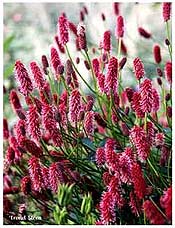
CHING WAN HUNG
Burn Ointment
Ching Wan Hung (also written Jing Wan Hong) is a Chinese herbal ointment that is considered especially helpful in the treatment of burns. It has been applied to chemical burns, radiation burns, and sunburns, as well as burns caused by fire, electricity, steam, or direct contact with a hot liquid. It is also utilized to treat hemorrhoids, poison oak/ivy dermatitis, and bedsores. It acts to relieve pain, decrease inflammation and infection, and aid in the regeneration of the damaged tissues. It is fast acting, alleviating burn pain almost immediately after application. Rub a generous amount of ointment directly into the affected area after it has been thoroughly cleaned. The area may be covered with gauze to further reduce possibility of infection and irritation. Gauze should be changed daily. Note that this ointment, like many Chinese ointments and liniments with a red color, can stain clothing.
The package labels, which have varied, gives this partial list of ingredients:
 Pistacia chinensis, full grown. |
|  Pistacia chinensis, foliage. |
Other ingredients mentioned in Chinese literature about this product include rhubarb and gardenia. The red color of the ointment comes from several of the herbs, hence the name "Wan Hung" (meaning myriad red ingredients; Ching means capital, referring to the origin of the formula in a capital city). An important ingredient, representative of those selected to treat burns, is Pistacia chinensis , with its distinctive red foliage. It is used to treat ulcerations and rashes, and is a common remedy for dermatitis caused by contact with poison oak and similar allergens. The active components include tannins, such as gallic acid, and simple flavonoids, such as fisetin, fustin, and quercetin.
|
Another important ingredient is Sanguisorba officinalis, with its brilliant purplish-red flowers (pictured right; the root, of similar color, is used). This herb contains tannins and saponins. It is traditionally used topically to treat insect bites and scalds. Laboratory tests show that sanguisorba decreases the amount of exudation from a burn wound and helps drying out the wound, thus decreasing the rates of infection. | 
|
|
Chaenomeles lagenaria (left), with its bright red-orange colored flowers (the fruits, used as the medicinal ingredient, are of similar color) is rich in organic acids that inhibit bacteria growth. The herb is used internally and topically to treat pain, especially arthralgia and spasms, but also for skin irritations and swellings. | 
|
Ching Wan Hung is made under the Great Wall Brand originated by the Tianjin Lerentang Pharmaceutical Factory, and produced at one of its divisions, the Tianjin Drug Manufactory (as translated on the package). This factory, its name more correctly translated as the Tianjin Traditional Chinese Medicine Manufactory, was founded in 1957. It has several production lines, yielding 84 products, of which 13 are made for export. The factory has advanced production technology to yield stable quality of products and the technology staff employs chemical testing techniques to verify the content of main active ingredients in finished products. The Tianjin products are well-known in China and have been highly praised by patients all over the world.
Outside of China, the factory is best known for its production of Huo Xiang Zheng Qi Pian, a famous traditional formula used mainly for digestive upsets due to contaminated foods and to other infections that cause this symptom. It is made in many Chinese factories, but this one won the National Silver Medal for Superior Products, and retained a lead position three times in the national evaluation. The Tianjin products are sold mainly in China, Singapore, Malaysia, Australia, Japan, and America.
Tianjin Lerentang Pharmaceutical Factory was set up in 1921; it is currently one of the largest traditional Chinese medicine factories. During nearly 80 years of development, Tianjin Lerentang has been praised for its unique prescriptions, excellent raw materials, quality products with reliable efficacy. Lerentang has about 1000 employees, including 140 specialists in various fields. More than 160 kinds of products of its Great Wall Brand are produced and enjoy a high prestige, including Ching Wan Hung. In 1981, Tianjin's Gan Mao Pian (a formula for common cold) received a national gold medal. The Great Wall Brand of Yang Yin Qing Fei Syrup (for cough) and Geng Nian An (a formula for menopause in pill form) received national silver medals respectively in 1983 and 1987. Since 1990, Lerentang was awarded the certificate of Good Manufacturing Practices by Germany and Australia, which played an important role in opening European, Australian, and American markets. A new facility for manufacture of export products was built in 1995 (pictured below).

The Tianjin Lerentang facility for manufacture of export products.